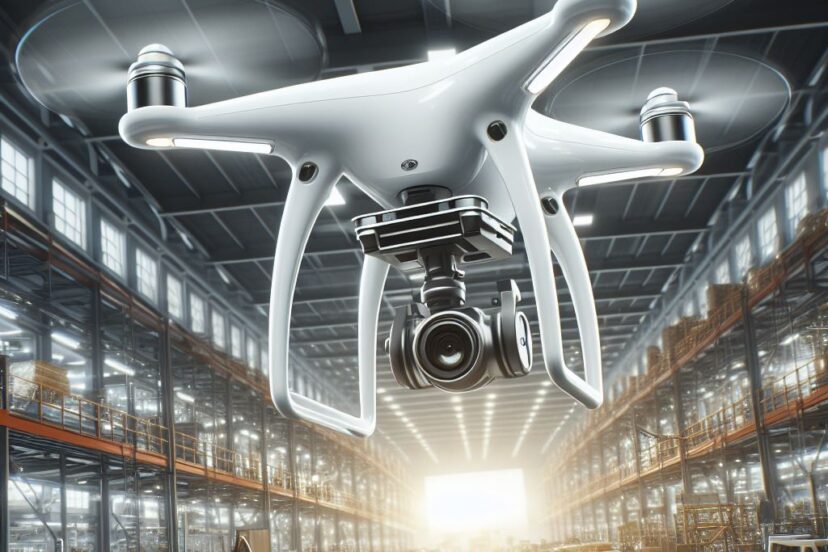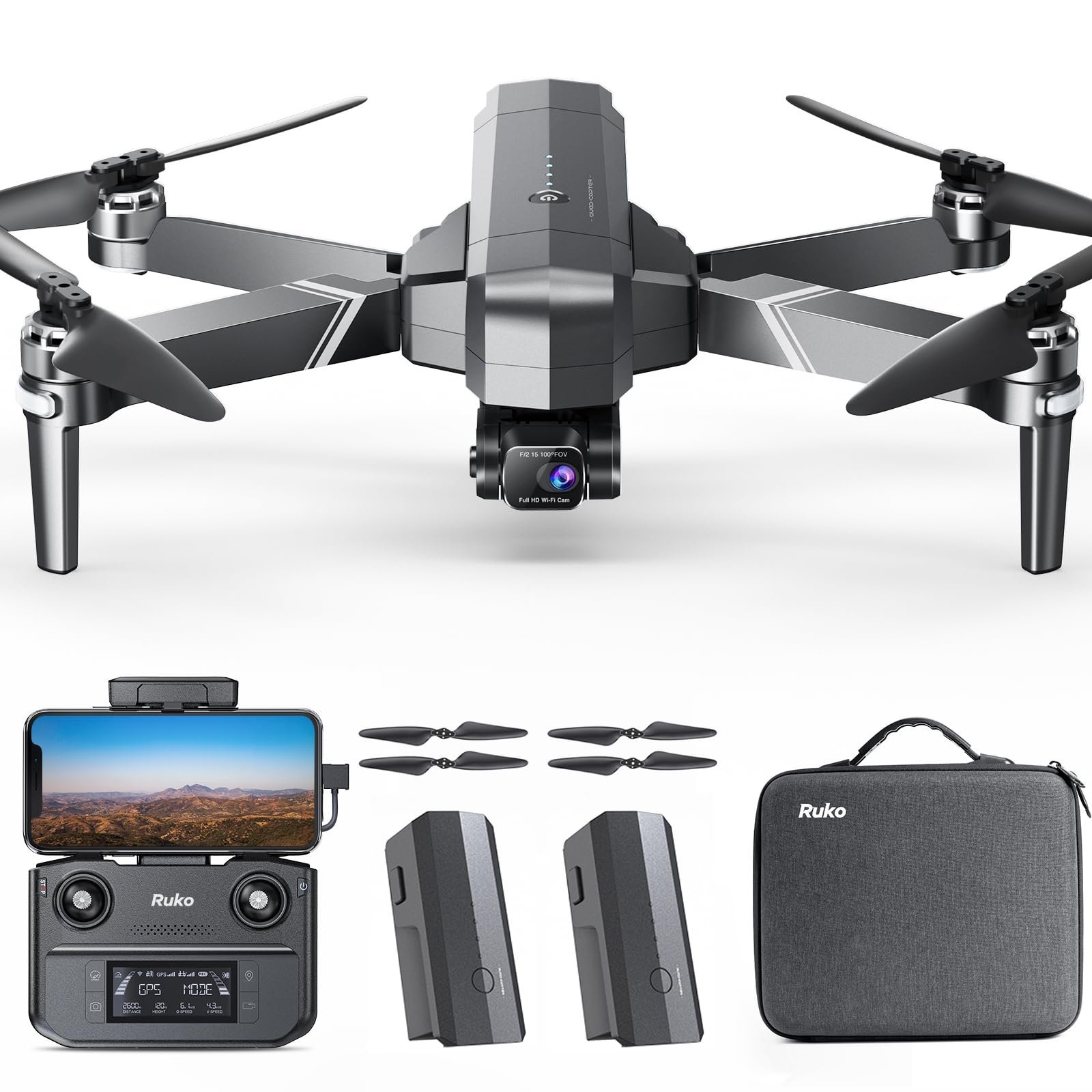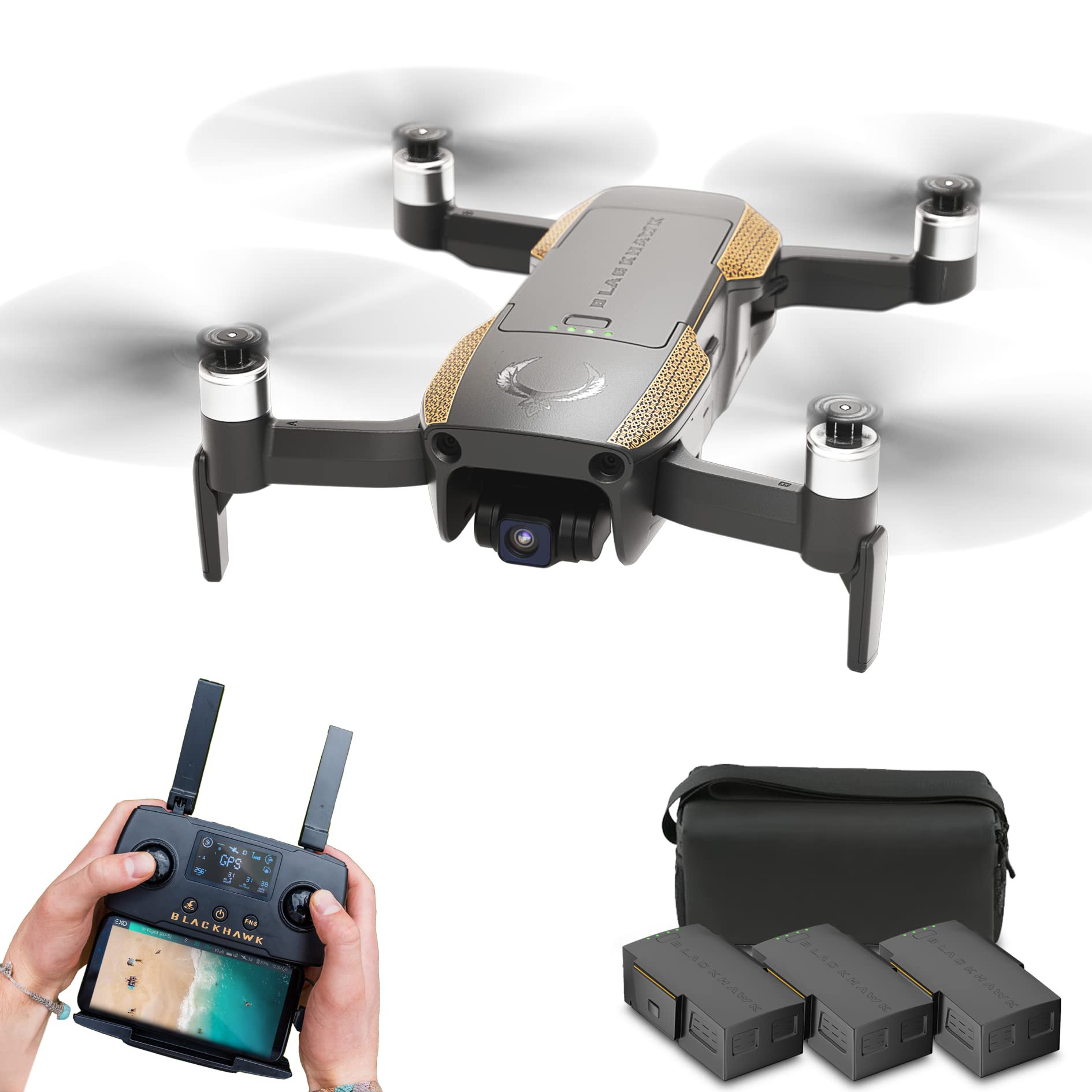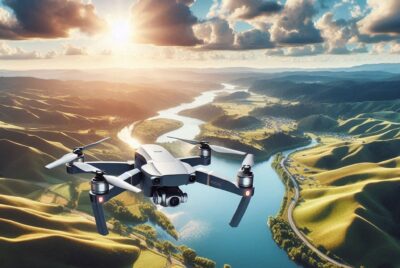Industrial Drone Innovations: Aerial Transformation
*We may earn a commission for purchases made using our links. Please see our disclosure to learn more.
Industrial Drone Applications: Revolutionizing Inspection and Monitoring Operations
The industrial drone is reshaping various sectors by offering an aerial perspective that is difficult to achieve through traditional means. From surveying vast construction sites to monitoring pipelines over rugged terrain, these unmanned aerial vehicles (UAVs) provide essential data while reducing the time and manpower typically required for such tasks. The technology embedded within industrial drones, such as high-resolution cameras, thermal sensors, and advanced navigation systems, allows for precise and efficient operation.
I recognize that the right industrial drone can be a game-changer for businesses looking to enhance their operational efficiency and data collection capabilities. These drones are not only increasing safety by reducing the need for human presence in hazardous environments but are also playing a pivotal role in the realms of agriculture, construction, and energy, among others, by enabling accurate mapping, inspection, and surveillance operations.
When considering the purchase of an industrial drone, it’s crucial to think about factors such as payload capacity, battery life, range, and the robustness of the drone in various environmental conditions. The drone’s compatibility with different sensors and the ease of integration with existing workflows are also significant considerations. Additionally, regulatory compliance and post-purchase support are important, as the legal landscape and technical requirements can be complex.
I spent a significant amount of time examining various models, taking into account these critical aspects to help identify the industrial drones that stand out for their reliability, performance, and ease of use.
Top Industrial Drone Selections
In my rigorous search for the most reliable industrial drones on the market, I’ve focused on models that excel in performance, durability, and advanced features. These flying powerhouses are designed to handle challenging tasks across various industries, from agriculture to construction. All selected drones boast impressive capabilities and are evaluated based on their payload capacity, flight time, range, and resistance to environmental factors. My comprehensive list aims to guide professionals in selecting a drone that meets their specific operational needs.
Bwine F7 Night Vision
I’d recommend this drone for anyone needing a reliable and feature-rich option for aerial photography, especially at night.
Pros
- Exceptional night vision capabilities with a 4K camera
- Impressive flight time totaling 75 minutes with three batteries
- Reliable GPS for easy tracking and automated return
Cons
- Charging time can be long, especially with multiple batteries
- Might be challenging for absolute beginners despite the beginner mode
- The app interface could be more intuitive for advanced settings
Having recently taken the Bwine F7 out for a spin, I must say, the night photography was a game-changer. The 4K camera with its 3-axis gimbal captured smooth and crystal-clear images even in low-light conditions. It’s like having night-vision goggles, allowing you to uncover the nocturnal secrets of the landscape below.
One thing that stood out during my flights was the substantial battery life. With 75 minutes of flight time over three batteries, I had ample opportunity to explore and capture sprawling vistas without the constant worry of a dwindling battery. This endurance makes it a workhorse for extended projects.
Navigating with the Bwine F7 felt intuitive, thanks to the reliable GPS system. At one point, I tested the auto-return feature by sending the drone beyond my line of sight. It returned smoothly to the launch point without a hitch, which was a relief. Trusting your drone to come back home reduces the anxiety of losing it, especially when flying over challenging terrains.
However, patience is key with the Bwine F7, as charging all those batteries takes time. I found myself planning charge cycles well in advance to avoid downtime. Beginners may also feel a steep learning curve, even though there’s a beginner mode; the array of features can be daunting at first. Lastly, while the advanced settings in the app are powerful, they do require some familiarity, which I gained over time through trial and error.
Overall, the Bwine F7 proved to be an ally for my aerial photography adventures—not just for its high-quality images but also for its robust build and dependable return-to-home feature. Despite its few drawbacks, the drone’s outstanding performance, especially under starlit skies, makes it a worthy consideration for both hobbyists and professionals.
Bwine F7GPS Advanced Drone
If you’re seeking a reliable drone with prosumer features without breaking the bank, the Bwine F7GPS is a strong contender.
Pros
- Impressive stability and wind resistance make for clear footage
- Long-range control provides extensive exploration potential
- Dual batteries support extended flight sessions
Cons
- Total battery charge time may test your patience
- Weight and size may not be as portable as desired
- Requires some learning for drone novices
After orchestrating an afternoon flight session with the Bwine F7GPS, I’m struck by its commendable stability in the breezy conditions. Its 3-axis gimbal kept the camera steady, which is critical for professional-grade photo and video quality. Piloting it was a breeze with its responsive controls, leaving me assured of its reliability even amidst gusts that have grounded lesser drones.
The ability to explore from such distances without losing signal is a game-changer. I could maneuver this drone nearly as far as I could see, capturing expansive landscapes with its 4K camera. The transmission range did not disappoint, reaching extents I’ve only seen on more expensive models, all while sending crisp images back to my screen.
I’ve been particularly impressed by the dual batteries, each offering roughly 25 minutes of flight time. It feels liberating to not rush my aerial photoshoots, knowing I have ample time to get the perfect shot. However, the lengthy charge time is a trade-off, so planning your sessions in advance is advisable.
Despite its size, which may not slide as easily into a backpack as I’d like, the sturdiness of the Bwine F7GPS gives it a robust feel, crucial for withstanding the rigors of frequent use. Beginners might find its comprehensive features a bit overwhelming at first, but it’s nothing a little practice can’t remedy.
Ruko F11GIM2 Drone
The Ruko F11GIM2 is a solid choice for both hobbyists and professionals alike, delivering stable and high-quality aerial footage with ease.
Pros
- Impressive battery life for extended flights
- Clear 4K video quality with a stable 2-axis gimbal
- Resilient to harsh winds due to Level 6 wind resistance
Cons
- USB-only remote connection may be limiting for some users
- Beginner mode may be too restrictive for experienced pilots
- The auto-discharge of batteries might require frequent attention
Having recently taken the Ruko F11GIM2 for a test flight, I was immediately taken by the drone’s long-lasting battery life. It’s not every day you come across a drone that lets you stay in the air for over an hour on a single journey, thanks to its two intelligent batteries. The peace of mind I got from knowing I had ample flight time to capture the shots I needed was invaluable.
The clarity and stability of the 4K footage are also noteworthy. It’s clear that the 2-axis gimbal, along with Electric Image Stabilization (EIS), does wonders in delivering steady and crisp videos, even from high altitudes or during gusty conditions; my footage turned out to be smooth and professional-looking despite some challenging winds.
Despite its benefits, the Ruko F11GIM2 isn’t without its drawbacks. Users restricted to USB connections to their smartphones may find this to be a limiting factor, although I had no issues with transmission during my flights. I also noticed that while the beginner mode is fantastic for novices to get to grips with the controls, it does limit the full potential of the drone – something to keep in mind for the more experienced flyers craving freedom in their flight.
In conclusion, my hands-on experience with the Ruko F11GIM2 has been predominantly positive. As someone who appreciates capturing quality footage without the constant worry of battery life or flight instability, this drone has exceeded my expectations. However, it’s necessary to stay on top of battery maintenance, and if you’re a seasoned pilot, you may find the beginner restrictions a slight nuisance. Overall, though, this drone is a substantial investment that could significantly enhance your aerial video and photography capabilities.
Potensic ATOM Drone
If you’re eyeing a robust yet user-friendly aerial companion, the Potensic ATOM Drone exceeds expectations with its impressive capabilities right out of the box.
Pros
- Excellent flight time with three batteries included
- Stable and clear 4K footage, even in windy conditions
- No FAA registration needed for the lightweight build
Cons
- Occasional connectivity interruptions over long distances
- Limited advanced flight modes for professional pilots
- Requires regular firmware updates for optimal performance
Having recently taken the Potensic ATOM Drone for a series of test flights, I found the extended flight time genuinely liberating. Three batteries providing a combined 96 minutes of airtime meant uninterrupted exploration and creativity. The quick charge feature added to the convenience, swiftly readying the ATOM for more aerial adventures.
The camera quality of this drone genuinely surprised me. Capturing 4K footage with the stability ensured by the 3-axis gimbal even when challenged by brisk winds exceeded my expectations for a drone of this size and price point. Visual tracking added an element of professionalism to my shots—footage that once required expensive equipment is now achievable with a press of a button.
While impressive, the touted 6KM transmission range was a bit optimistic. In my experience, as the drone edged farther away, I noticed some lag and interruptions in connectivity. This wasn’t a deal-breaker, however, as the drone managed to hold a strong signal well within what I’d consider a reasonable range for safe operation. Moreover, enthusiasts looking for more advanced flight modes might find the features limited, but for the majority of users, the ATOM provides plenty of functionality to get started with aerial photography.
Updating firmware is a part of drone ownership, and the ATOM is no exception. Staying on top of updates ensures optimal performance, so this minor inconvenience actually signifies continuous improvement. Overall, the Potensic ATOM Drone is a splendid choice for anyone from the recreational hobbyist to the budding aerial photographer. Its combination of portability, user-friendly interface, and solid performance make it a noteworthy contender in the compact drone market.
EXO Blackhawk 2 Pro
If you seek professional-grade aerial photography with user-friendly features, the EXO Blackhawk 2 Pro is worth considering despite some drawbacks.
Pros
- Remarkable photo clarity facilitated by a substantial 48MP sensor
- Reliable video stabilization courtesy of a 3-axis gimbal
- Comprehensive software suite that simplifies flying and filming
Cons
- Lacks in-built obstacle avoidance calibration
- Potential for customer support issues based on user feedback
- Flight time and range may not meet the needs of more advanced users
Having recently flown the EXO Blackhawk 2 Pro, I found that its image quality truly stands out. The 48MP CMOS sensor captures stunning details, and with the HDR mode, even challenging lighting conditions are deftly handled. Night shots are remarkably clear, turning late-hour sessions into a treat.
The drone’s video capabilities are equally impressive. The 4K UHD HDR footage is professional and cinema-grade, telling any story with clarity and cinematic flair. The 3-axis gimbal stabilization plays a pivotal role here, ensuring that each frame remains steady and free of unwanted jitters or shakes.
Its comprehensive software features, particularly the Follow-Me and Return to Home functions, provide peace of mind and ease of control during flight. It feels like having an intelligent copilot; the drone handles a lot of the navigational complexity, letting me focus on capturing great footage.
On the flip side, my experience was tainted by the absence of an in-built obstacle avoidance calibration which is a feature I value for safety and ease of use. While flying, I anticipated more autonomous protection against potential collisions.
Customer service also appears to be a hit or miss, as noted in some of the feedback from other users. A lack of timely responses could be frustrating, especially when needing assistance for such a sophisticated piece of equipment.
Lastly, while EXO boasts about a 35-minute flight time and a 5-mile range, these numbers are optimal under ideal conditions. In my hands-on experience, expecting a bit less from these metrics ensures you won’t be disappointed, which is something to keep in mind if you require a drone for extended use in more demanding environments.
Buying Guide for an Industrial Drone
Understanding Your Needs
Before selecting an industrial drone, I consider the primary application it will be used for, such as surveying, inspection, or delivery. The choice of drone should align with the specific tasks I aim to accomplish.
Key Features to Consider of an Industrial Drone
Flight Time and Battery Efficiency
I look for drones with a long flight time and efficient battery use. This ensures minimal downtime and maximizes operational efficiency.
Payload Capacity
The payload capacity should meet my requirements. I confirm the drone’s ability to carry the necessary tools or sensors.
Durability and Weather Resistance of an Industrial Drone
Durability is crucial in industrial environments. I choose drones with high-quality build materials and weather resistance to withstand harsh conditions.
Range and Connectivity
Considering the operational range is important. I make sure the drone can maintain a stable connection over the distance I plan to use it.
Ease of Use
User-friendly drones save time and reduce the need for extensive training. I prefer drones with intuitive controls and straightforward software.
Industrial Drone Comparison Table
| Feature | Importance | Notes |
| Flight Time | High | Longer flight times reduce the need for frequent battery changes. |
| Payload Capacity | Variable | Depends on the weight of the objects or sensors I’ll be using. |
| Durability | High | Ensures longevity and reliability. |
| Range | Medium | Should match the size of the area I’ll cover. |
| Ease of Use | Medium | Simplifies operation and training. |
After-Sales Support and Warranty of an Industrial Drone
I examine the after-sales support options and warranty duration, ensuring that I have access to assistance and maintenance when needed.
By following these steps, I make an informed decision when selecting an industrial drone that suits my operational needs.
FAQs About the Industrial Drone
In this section, I provide clear, concise answers to common inquiries about industrial drones, focusing on their applications, distinguishing features, capabilities, regulatory impacts, cost factors, and major manufacturers.
1. What are the applications of industrial drones in various industries?
Industrial drones serve a multitude of functions across different sectors. In construction, they aid in surveying and monitoring sites. In agriculture, drones assist in crop scouting and health assessment. The energy sector uses drones for inspecting power lines and pipelines, while in mining, they are invaluable for mapping and surveying operations.
2. Which features distinguish the best industrial drones on the market?
The top-tier industrial drones are characterized by robust build quality, enhanced battery life, and advanced navigation systems. They also possess superior camera and sensor capabilities for detailed imaging and data collection. Strong connectivity features for seamless communication and integration with industry-specific software are also hallmarks of the best industrial drones.
3. What are the capabilities of industrial drones with lifting and payload tasks?
Industrial drones designed for lifting can carry significant payloads, essential for transporting materials, tools, or sensors. These drones are equipped with powerful motors and reinforced structures to handle the added weight, allowing them to perform tasks such as delivering supplies to difficult-to-reach areas or deploying equipment for scientific measurements.
4. How do safety regulations impact industrial drone operations?
Safety regulations are critical in ensuring secure industrial drone operations. These rules govern where drones can fly, their altitude, proximity to people and private property, and the qualifications required of drone pilots. Compliance is paramount to avoid legal repercussions and maintain high safety standards in diverse industrial environments.
5. What factors influence the cost of an industrial drone?
The cost of industrial drones is influenced by their design, material quality, technology, and payload capacity. Additional factors include the sophistication of onboard sensors, the drone’s range and endurance, and the inclusion of specialized software for data analysis. After-sales support and training services can also affect the overall investment.
6. Who are the leading manufacturers of the industrial drone?
Several key players dominate the industrial drones market. DJI, known for their reliable and sophisticated drones, is a major manufacturer. Other leaders include Yuneec, which offers drones with robust engineering, and senseFly, a company renowned for drones designed for mapping and surveying tasks. Parrot and Autel Robotics are notable for their advanced drone technologies tailored to industrial applications.









